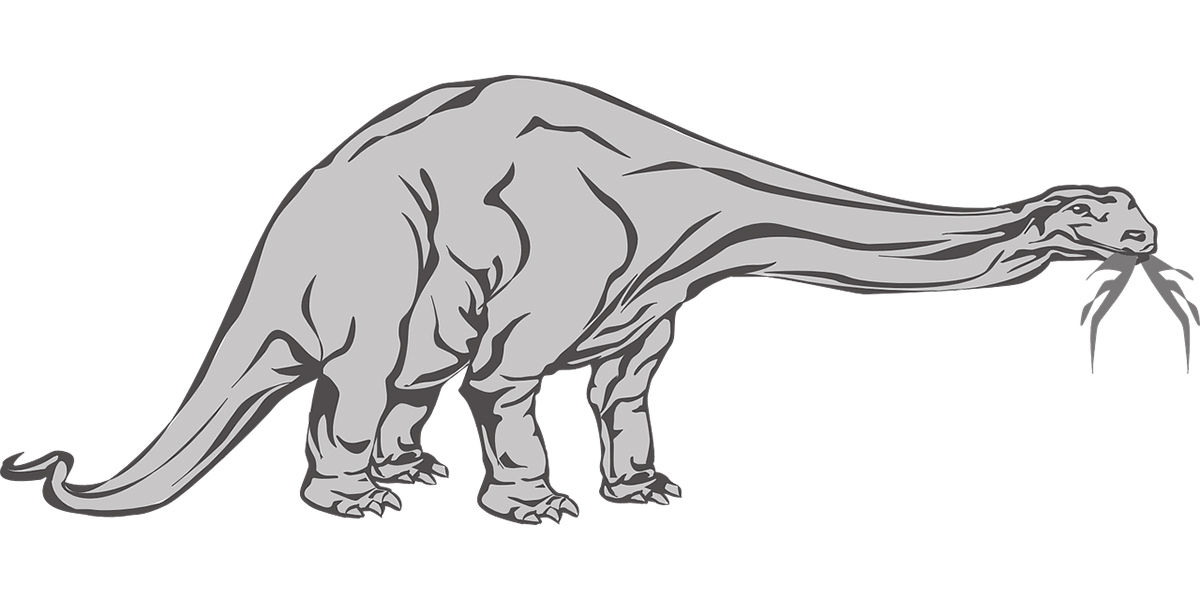
We all know that dinosaurs were large lizards that inhabited the earth many millions of years ago. The word "dinosaur" comes from Latin and means "terrible lizard". Despite the general image we have of these animals as large monsters with sharp teeth and a thirst for blood, many of them ate plants. Herbivorous dinosaurs represent a very diverse group and have very different characteristics from carnivores.
These gigantic lizards were at the top of the food chain for a long time, until their mass extinction took place. In this article we will talk a little about the general characteristics of herbivorous dinosaurs and we will also give examples of the most representative ones.
Characteristics of herbivorous dinosaurs
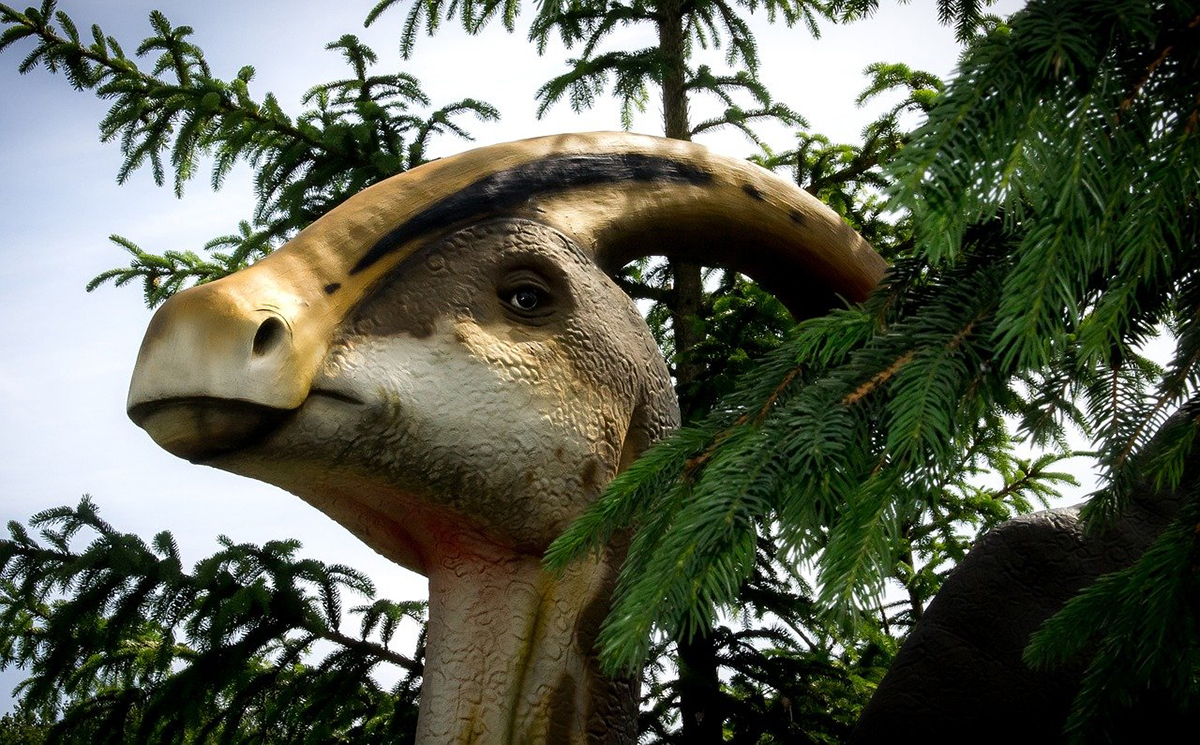
Although the physical traits and behavior of herbivorous dinosaurs vary greatly, there are some characteristics that they all share. Among them is obviously food. These prehistoric lizards included bark, leaves, and soft twigs in their diet, since during the Mesozoic there were no flowers, grass or fleshy fruits. At that time, the fauna consisted mainly of large cycads, ferns, and conifers.
Due to the type of food these animals ate, the teeth they had shared some features. These had a rather more homogeneous shape than those of carnivorous dinosaurs. Besides, herbivores had larger front teeth or even a beak, which made it easier to cut the leaves. On the other hand, the posterior teeth were flat and thus could better swallow the vegetables. Experts speculate that plant-eating dinosaurs chewed on them, just like modern ruminants do. Another theory says that their teeth had several generations, unlike human beings who only have two (the milk teeth and then the final ones).
Finally, it remains to be noted that large sauropods they had a kind of stone inside their stomach, called gastroliths. It is supposed that these helped to crush the food once ingested. At present, some birds also have these so-called gastroliths.
The most representative herbivorous dinosaurs
There are many species of herbivorous dinosaurs that have been discovered today. They come in different sizes, shapes and eras. While some had extremely long necks for feeding, others had horns for attacking or shells for defense. Next we will talk about the most representative and currently known.
the brachiosaurus

One of the best known herbivorous dinosaurs is the Brachiosaurus or Brachiosaurus. Its name means "lizard arm" and it belongs to the group of sarrischian sauropods. This species lived from the late Jurassic period to the middle of the Cretaceous period. It is currently one of the best-known dinosaurs thanks to its appearance in the "Jurassic Park" saga. Besides, It is one of the largest herbivorous dinosaurs of all time.
[related url=»https://infoanimales.net/dinosaurs/brachiosaurus/»]
The Brachiosaurus could measure up to 26 meters long and reach an altitude of 12 meters. Experts speculate that its weight was approximately 32 to 50 tons. His most prominent feature was his extremely long neck. which included 12 vertebrae with a length of 70 centimeters each. In addition, it is estimated that she had to eat about 1.500 kilos of food every day to be able to maintain the energy level that her enormous body demanded. Regarding the social life of this animal, it is likely that it lived in small herds in order to protect itself from large predators.
the stegosaurus

Another prominent herbivorous dinosaur is the Stegosaurus or Stegosaurus. He has quite amazing physical features and also became very famous thanks to his appearance in the "Jurassic Park" saga. Its name comes from the Greek and means "covered lizard" or "roofed lizard". It owes its name to the large plates that are along its back and that are used to defend itself. The Stegosaurus lived during the Late Jurassic period in what we now know as Portugal and the United States.
[related url=»https://infoanimales.net/dinosaurs/stegosaurus/»]
This prehistoric lizard was about thirty feet long and four feet tall. In addition, its weight is estimated at about six tons. Thanks to the two rows of bony plates running along its spine, it is an easily recognizable dinosaur. These plates were not only useful when defending themselves against other predators, but it is also speculated that they had a regulatory function to adapt body temperature to that of the environment. In the mouth, the Stegosaurus had a beak to easily pluck leaves from plants.
the triceratops
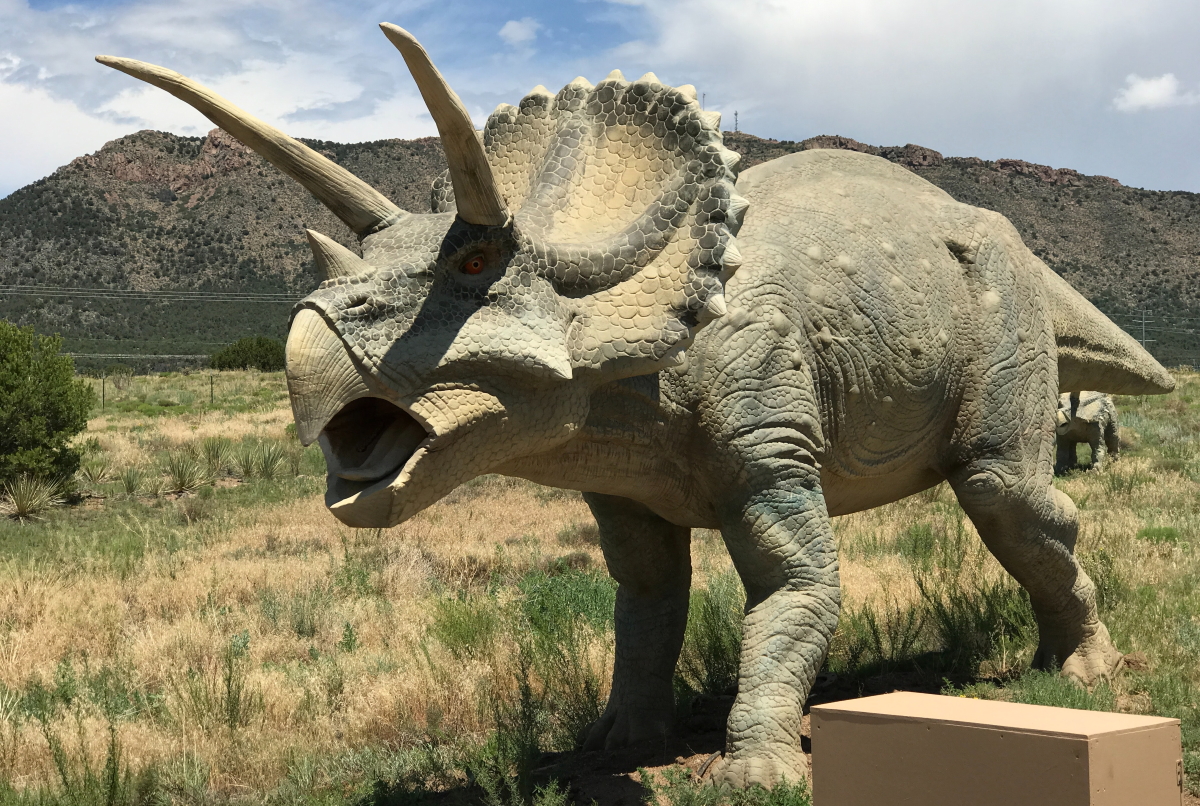
Within the list of the most outstanding herbivorous dinosaurs, the Triceratops cannot be missing. Its name from the Greek means "face with three horns". and that is its most outstanding feature: It had three horns on its face that served both to defend itself and to attack if necessary. This animal also had an important appearance in the "Jurassic Park" saga and, thanks to this, has become one of the favorite dinosaurs of many people. It lived during the Late Cretaceous period with what is undoubtedly the most famous carnivore: The Tyrannosaurus Rex. Both inhabited present-day North America and the Triceratops was part of the usual prey for the Tyrannosaurus.
[related url=»https://infoanimales.net/dinosaurs/triceratops/»]
Experts estimate that Triceratops had a length of 7 to 10 meters and a height of 3,5 to 4 meters. In addition, according to his calculations, the weight of this animal ranged from 5 to 10 tons. A very remarkable feature, apart from the facial horns, was its broad skull that represented almost a third of the total length of the animal. It is currently considered the largest skull of all land animals. Regarding the horns, it had one above each eye and another on the snout. Horns measuring a meter long have been found. Another important feature to highlight is the skin of the Triceratops, as it was different from that of the other dinosaurs. There are even studies that claim that I may have been covered in hair.
The Patagotitan Mayorum
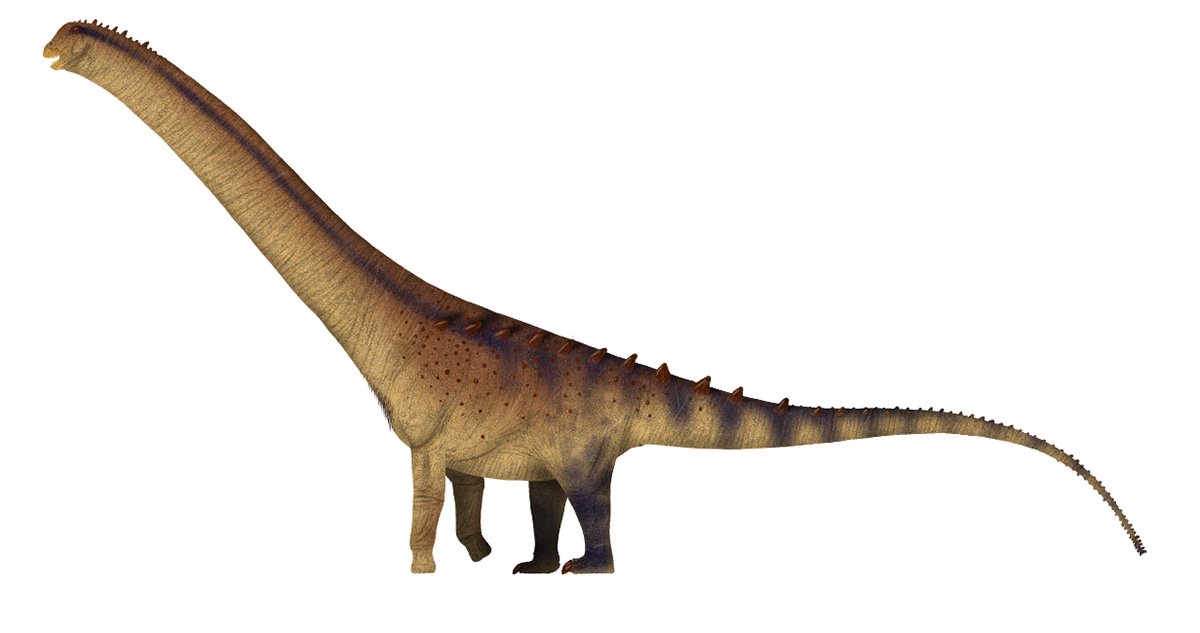
The Patagotitan Mayorum is little known but its recent discovery was very important in the world of paleontology. This gigantic long-necked was discovered in 2014 in Argentina and was a big news, because it may be the largest dinosaur that ever lived. It lived about 95 to 100 million years ago in a forest region of present-day Argentine Patagonia.
[related url=»https://infoanimales.net/dinosaurs/biggest-dinosaur/»]
At the moment, only remains of a skeleton of this gigantic animal have been found, but experts have calculated that it could have been about 37 meters long and weighed about 69 tons. It is currently known that it was a herbivorous dinosaur. However, this recent finding still leaves many unknowns unresolved.
the iguanodon
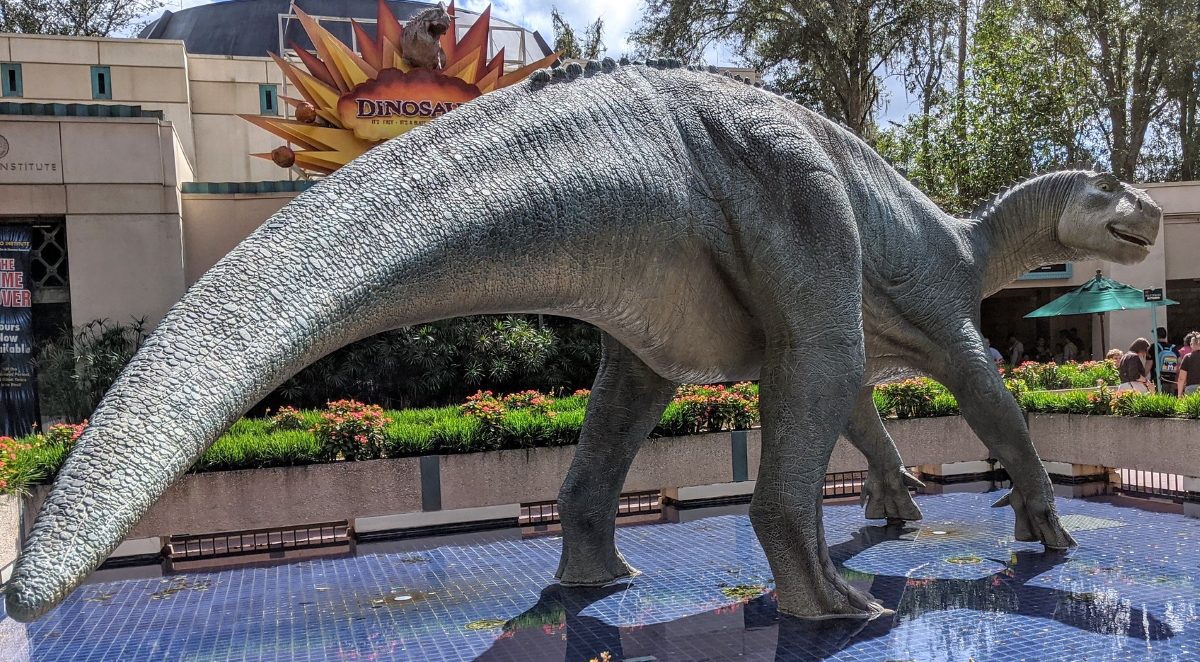
Thanks to the movie titled "Dinosaur" by Disney, the Iguanodon is one of the most popular dinosaurs among children. Its name means "iguana tooth" and it lived in present-day Europe in the early Cretaceous period. Its most prominent features are its front legs. Furthermore, this herbivore he was able to walk on both fours and two legs. It had a length of 10 to 12 meters and a height of 2,70 to 3,50 meters. Its weight ranged between 4 and 5 tons.
[related url=»https://infoanimales.net/dinosaurs/iguanodon/»]
Paleontologists speculate that it was a gregarious animal that could have lived in small herds, although there are different opinions regarding this last fact. It should also be noted that it seems there was no sexual dimorphism between males and females of Iguanodon, a trait that sets it apart from other herbivorous dinosaurs.
the ankylosaurus
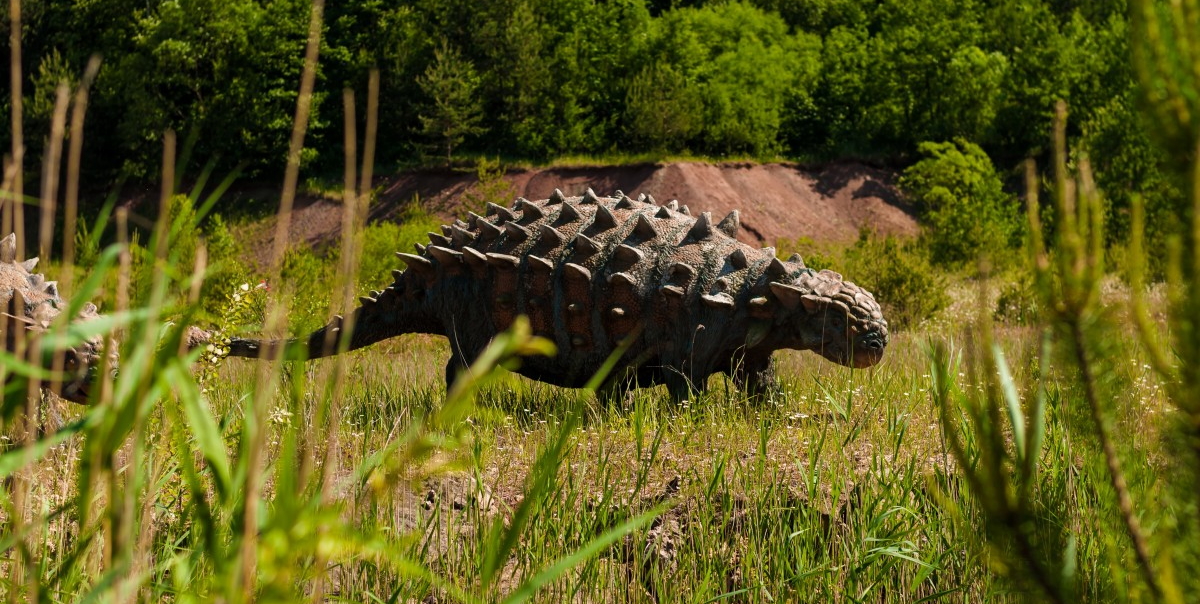
Finally, it remains to highlight the Ankylosaurus or Ankylosaurus. This herbivore lived at the end of the Cretaceous period in present-day North America, where it coexisted with other very famous dinosaurs such as Triceratops or Tyrannosaurus. Due to its shell, they gave it the name from the Greek "Ankylosaurus", which means translated "armored lizard". Apart from the armor that covered the entire dorsal part of its body, it is also characterized by a club that is at the end of its tail. The kind of armor that covered the Ankylosaurus was ideal for defending itself while the force with which it could hit with its tail club could be lethal to other animals.
[related url=»https://infoanimales.net/dinosaurs/ankylosaurus/»]
To this day, no complete skeleton of this dinosaur has been found. However, scientists estimate that it was between 6 and 9 meters long and that its height was around 1,70 meters. Regarding the weight, it is estimated that it reached 6 tons. Although there are still parts of his body yet to be known, he does know for certain that he had a short, broad body frame and that he walked on all fours.
There are many more species of herbivorous dinosaurs that we have not named in this article, such as Parasaurolophus, Protoceratops or Apatosaurus. Each of them with unique and remarkable characteristics that differentiate it from other animals. In addition, it is very likely that over the years fossils belonging to dinosaurs not yet discovered or remains of dinosaurs that we already know will continue to be found, but that may open the way to new theories, speculations and hypotheses.